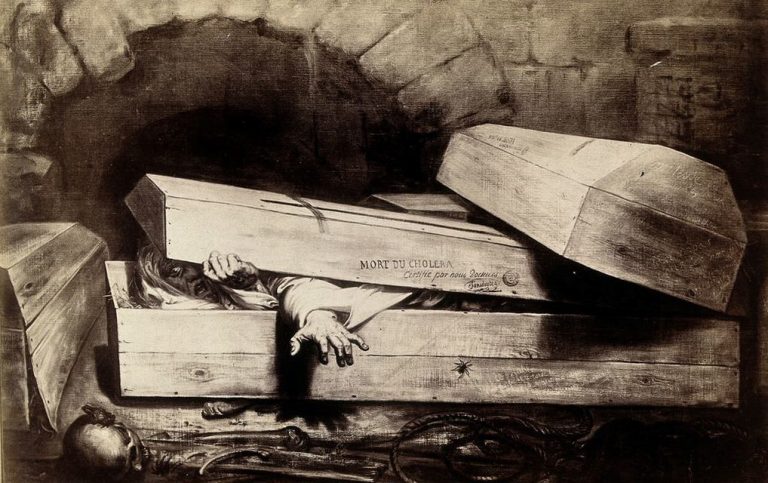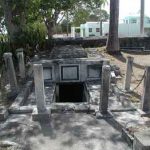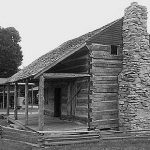Live burial sometimes occurs, in which individuals are buried while still alive. Having no way of escaping interment, they die in place, typically by asphyxiation, dehydration, starvation, or (in cold climates) exposure. People may come to be buried alive in a number of different ways:
- An individual may be intentionally buried alive as a method of execution or murder.
- In Ancient Egypt, servants were sometimes intentionally buried alive with their Pharaoh in order to serve him/her in the afterlife.
- A person or group of people in a cave, mine, or other underground area may be sealed underground due to an earthquake or other natural disaster.
- People have been unintentionally (uncommonly) buried alive because they were pronounced dead by a coroner or other official, when they were in fact still alive.

As show the stories, the probability to be buried alive exist. Some people get obsessed in such a way as to specify in their wills they wanted special tests performed on their bodies to make sure they were actually dead. Surgical incisions, the application of boiling hot liquids, touching red-hot irons to their flesh, stabbing them through the heart, or even decapitating them were all specified at different times as a way of making sure they didn’t wake up six feet under. Some opted for being buried with the means to do themselves in, and guns, knives, and poison were packed into coffins along with the deceased. Later came the special coffins …
Premature Burial
To die is natural; but the living death
Of those who waken into consciousness,
Though for a moment only, ay, or less,
To find a coffin stifling their last breath,
Surpasses every horror underneath
The sun of Heaven, and should surely check
Haste in the living to remove the wreck
Of what was just before, the soul’s fair sheath,
How many have been smothered in their shroud!
How many have sustained this awful woe!
Humanity would shudder could we know
How many have cried to God in anguish loud,
Accusing those whose haste a wrong had wrought
Beyond the worst that ever devil thought.Percy Russell, 1906
“All I desire for my own burial is not to be buried alive”.
Lord Chesterfield – Letter to his daughter-in-law, March 16, 1769.
“Have me decently buried, but do not let my body be put into a vault in less than two days after I am dead”.
Dying request of George Washington.
“The earth is suffocating …. Swear to make them cut me open, so that I won’t be buried alive”.
Last words of composer, Frédéric Chopin.
Safety coffins
Fear of premature burial was widespread in 18th and 19th century Europe, leading to the invention of the safety coffin. Over thirty different designs were patented in Germany in the second half of the 19th century. The common element was a mechanism for allowing the ‘dead’ to communicate with people above ground. Many designs included ropes which, when pulled, would ring the church bell, or a purpose-mounted bell. Others replaced the bell with a raiseable flag, a powerful fire cracker or a pyrotechnic rocket. Some included a shovel, a ladder and a supply of food and water. An essential element, which was overlooked in some designs, was a breathing tube to provide air and occasionally even sustenance.
In 1822, Dr Adolf Gutsmuth of Seehausen, Altmark, demonstrated his design by having himself buried alive, whereupon he “stayed underground for several hours and had a meal of soup, beer, and sausages served through the coffin’s feeding tube”
The security coffin designed by Dr Johann Gottfried Taberger in 1829 alerted a cemetery night watchman by a bell which was activated by a rope connected to strings attached to the hands, feet and head of the ‘corpse’. The bell housing prevented the alarm from sounding by wind or birds landing on it. The design of the tube prevented rain water from wetting the ‘corpse’, and contained mesh to stop nuisance insects. On the event of the bell sounding, a second tube was to be inserted at the foot of the coffin and air pumped through with a bellows.
The patent for another safety coffin the ‘Vester Burial Case’ states
“The nature of this invention consists of placing on the lid of the coffin, and directly over the face of the body laid therein, a square tube, which extends from the coffin up through and over the surface of the grave, said tube containing a ladder and a cord, one end of said cord being placed in the hand of the person laid in the coffin, and the other being attached to a bell on the top of the square tube, so that, should a person be interred ere life is extinct, he can, on recovery to consciousness, ascend from the grave and the coffin by the ladder; or, if not able to ascend by said ladder, ring the bell, thereby giving an alarm, and thus save himself from premature burial and death; and, if on inspection, life is extinct, the tube is withdrawn, the sliding door closed, and the tube used for a similar purpose.”
The screams of a young Belgian girl who came out of a trance-like state as the earth fell on her coffin so upset Count Karnice-Karnicki, Chamberlain to the Czar and Doctor of the Law Faculty of the University of Louvain, that he invented a coffin which allowed a person accidentally buried alive to summon help through a system of flags and bells. Patented in 1897, this hermetically-sealed coffin had a tube, about 3.5 inches in diameter, extending to a box on the surface. The tube was attached to a spring-loaded ball sitting on the corpse’s chest. Any movement of the chest would release the spring, opening the box lid and admitting light and air into the coffin. To signal for help, a flag would spring up, a bell would ring for half an hour, and a lamp would burn after sunset. Similar “life-signalling” coffins were patented in the United States.
Evangelist Mary Baker Eddy has long been rumored to have been buried along with a functioning telephone. That bit of popular lore likely grew out of a misremembering of the circumstances of her burial. After she died at her home in Boston, in December 1910, her body was kept at the general receiving vault at Mount Auburn Cemetery in nearby Cambridge for several months while her monument was being constructed. Because she was a world renowned figure and there was some fear of thievery, a guard was hired to stay with the body until it was interred and the tomb sealed, and a telephone was installed at the receiving vault for his use during that period. There was never a phone at the monument, inside or outside.
The same rumor is associated with Aimee Semple McPherson, another famous evangelist. She was buried in 1944 in Los Angeles’ Forest Lawn Memorial Park. McPherson used a telephone on the stage of her Angeles Temple to keep in contact with her radio crew during sermons, and this may have contributed to the rumor. More likely, people confused her with Mary Baker Eddy.
Although several designs were built and sold, there is no indication that any dead person was ever buried in a safety coffin. Most models had sufficient design flaws to suggest that they would have been unlikely to have worked properly if they had actually been used. For example the models that required ropes to be tied directly to the arms and legs, so that the alarm was raised upon any sign of movement of the deceased, would all have been triggered by the natural movements of the limbs that occur as the body putrefies and bloats.
Safety coffins are still available today. As recently as 1995 an Italian Fabrizio Caselli invented a model that includes an emergency alarm, two-way microphone/speaker, a torch, oxygen tank, heartbeat sensor and heart stimulator and proposed it to sale for $5,000. Akin to beeping devices which alert relatives to an elderly family member’s being in trouble, this casket is equipped with a beeper which will sound a similar emergency signal.
Those worried about premature burial would do well to consider Point #10 of “Short Reasons for Cremation,” a 12-point pamphlet circulated in Australia at the turn of the century: Cremation eliminates all danger of being buried alive.








